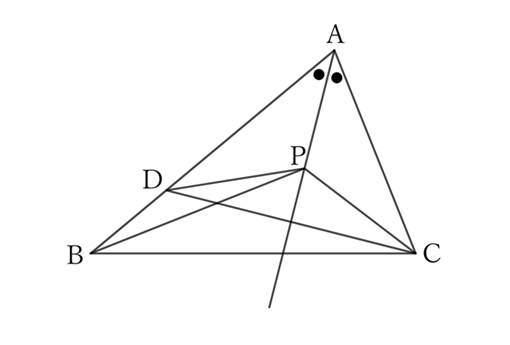Problem
In a triangle $ABC$, if we take any point $P$ on the bisector of $∠A$, we have
$$|AB-AC|>|PB-PC|.$$
However, let $AB≠AC$.
$$ $$
$$ $$
$\downarrow$ $\downarrow$ $\downarrow$ $\downarrow$ $\downarrow$
$$ $$
$$ $$
$$ $$
$$ $$
$$ $$
$$ $$
$$ $$
$$ $$
$$ $$
$$ $$
Solution

$(1)$ Let $AB>AC$.
If we take a point $D$ on $AB$ such that $AD=AC$,
$$APD≡APC,$$
$$∴ \ PD=PC,$$
$$∴ \ DB=AB-AD=AB-AC.$$
Since $△PCD$ is an isosceles triangle with $P$ as the vertex,
$$PD=PC,$$
$$∴ \ DB+PD>PB,$$
$$∴ \ DB+PC>PB,$$
$$∴ \ DB>PB-PC,$$
$$∴ \ AB-AC>PB-PC.$$
$(2)$ If $AB<AC$, then
$$AC-AB>PC-PB.$$
From $(1)$ and $(2)$,
$$|AB-AC|>|PB-PC|.$$
$ $
$ $
$ $
Reference Teiichiro Sasabe (1976) The Encyclopedia of Geometry (2nd edition), Seikyo-Shinsha, p.20